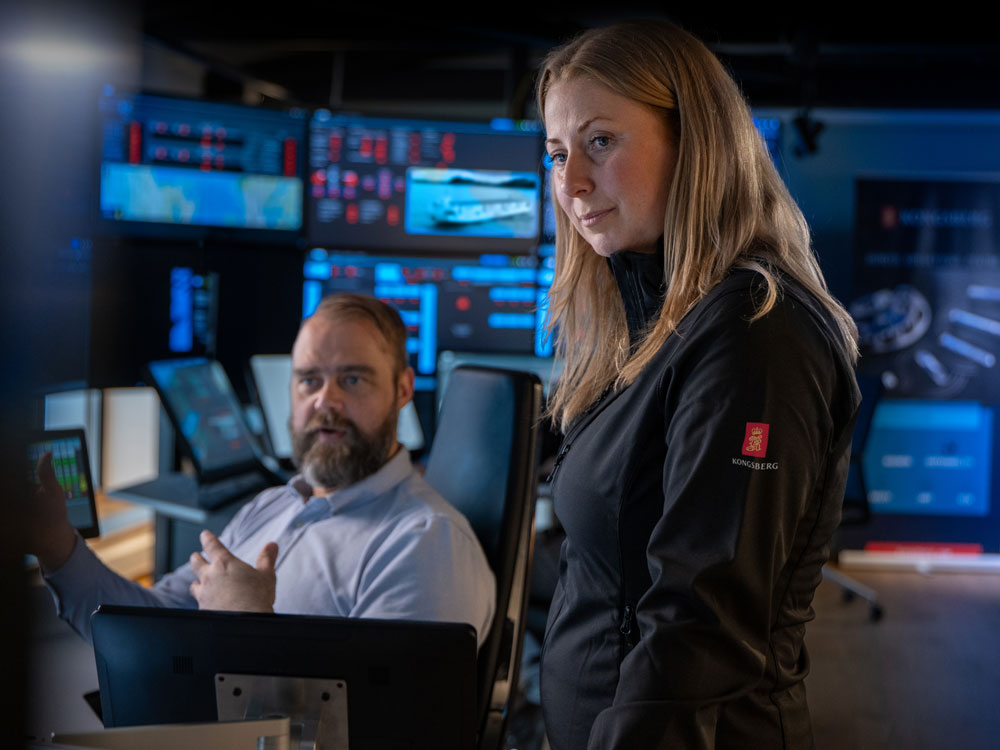As reported in Ship & Boat International May/June 2024 (pages 16-19), Kongsberg Maritime’s development of remote operation centres (ROCs) for uncrewed (or minimally crewed) vessels has seen the company work to bring traditional crewing roles onto shore – “starting with the chief engineer, then the navigator, then the master”, Ville Vihervaara, Kongsberg VP for Remote Operation Solutions, told us then.
Since that interview, Kongsberg has secured approval in principle from class society DNV to transfer the role of chief engineer to within Kongsberg’s ROC structure – “where the duties can be carried out from a desk-based workstation instead of on board a vessel”, the company says. The chief engineer will be able to monitor and control all shipboard systems (including the power management and ballast water systems), as well as the deck machinery, from his/her workstation in real time.
Kongsberg now aims to obtain full approval for this new ROC role following a two-year trial period to be overseen by both DNV and the Norwegian Maritime Authority.
Pål André Eriksen, Kongsberg Maritime SVP for remote and autonomous solutions, explains: “The role of chief engineer already involves a lot of monitoring of automation and control systems on board. For this trial, moving this functionality to the shore-based ROC will see one person now managing a range of systems across three vessels, rather than one.” These three vessels include the 80m, electric container vessel Yara Birkeland, which has undergone autonomous trials since its delivery in 2021; and the 66m, ASKO-owned, battery-electric freight barges Marit and Therese, which currently operate on the Oslo Fjord.
During the trial period, Kongsberg will follow DNV’s class guidelines for autonomous and remotely operated vessels (DNV-CG-0294) and remote engineering, monitoring and control systems (REMC) to gain full approval. Jarle Coll Blomhoff, DNV head of digital ship systems, comments: “Remote machinery support is a first natural step on the path to autonomy, as the engineering functions on board a vessel are in many ways already automated. We believe this is a technology that could contribute to a safer and more efficient world fleet by providing remote support for maintenance, troubleshooting [and] expertise on new alternative fuels that may be hard to get on board every vessel.” The transition of traditional crew roles from ship to shore may also help to counter the industry-wide seafarer shortfall.
All three vessels will be physically crewed by a master and navigator, who will remain in contact with the ROC-based chief engineer via shipboard video and radio connections throughout the trial. The chief engineer will be located at the ROC in Horten, which was formally opened by Massterly (a collaboration between Kongsberg Maritime and the Wilhelmsen Group) in March this year. Since its launch, the Horten ROC has been expanded to accommodate five remote operator workstations.
An-Magritt Tinlund Ryste, director of next-generation shipping at Konsgberg Maritime, tells Ship & Boat International: “The three vessels will continue to operate in their normal operating areas: for Yara Birkeland, between the quay at Herøya and the port in Brevik, while the ASKO barges will operate between Moss-Horten and Langøya.” A notable element of the trials, she adds, is that both operating areas are “crowded with commercial vessels and pleasure craft” – meaning that the pressure will be on to ensure the boats can demonstrate safe sailing in busy waters while avoiding collisions, allisions and disruption to other vessels.
Should Kongsberg gain full DNV approval to bring the chief engineer role onshore, it follows that the group will look to move across the master and navigator roles too. Anticipating a future where traditional crew roles can be performed remotely, Kongsberg opines: “Going to sea is neither as simple nor as popular as it used to be. Autonomous ships create new onshore roles, including for those who, for various reasons, cannot work on a vessel, such as being in a wheelchair or needing to pick up children at 4pm.”




